Looking for the best upper-body exercises? Upper-body workouts should concern not just the arms and shoulders but also the core. This means that it’s important to mix up things and give yourself the opportunity to target all large muscle groups.
The best upper-body exercises can be done with or without equipment. While most people prefer using massive gym machines to get the job done, there’s something to be said about the simple and straightforward workout tools.
In this article, we’re going to tackle both types. Check them out and see which works best for you.
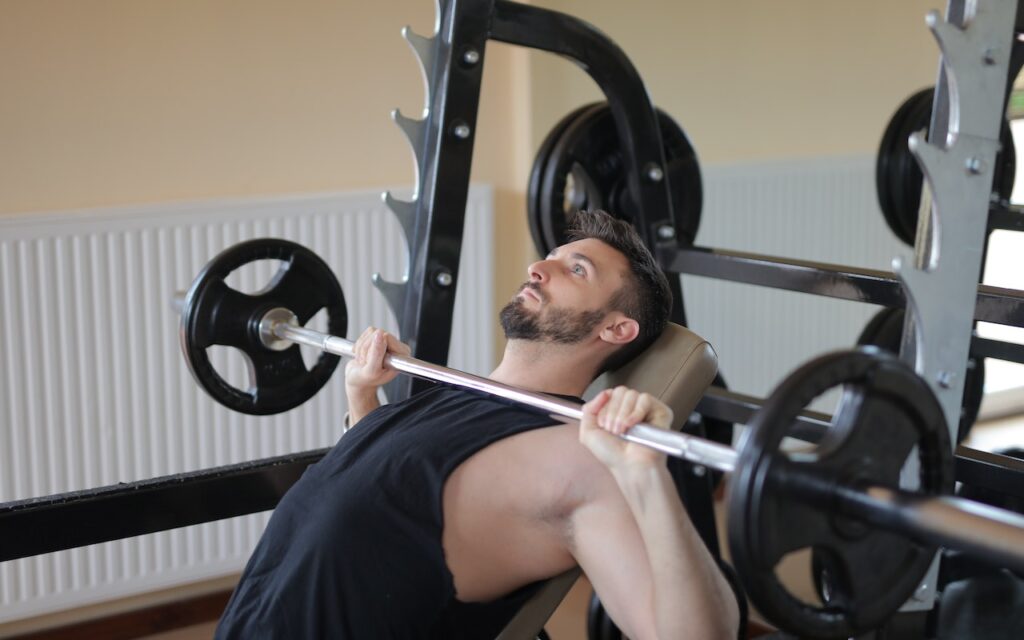
Best Upper-Body Exercises You Can Do At Home
1. Barbell Deadlift
A barbell deadlift looks easy at first but it’s actually pretty tough to execute. In order to perform a deadlift, you want to keep your feet hip-width apart and your core engaged. Bend at the waist and with your knees, making sure your calves remain straight.
Grab the bar just slightly outside of your legs and lift. Your core, arms, and shoulders should be the ones engaged. Hold for a few seconds and make sure the descent is controlled. For beginners, you should be able to do 4 sets with 6 reps each. Start with the lowest weight and work your way up.
2. Pull-Up
To perform a pull-up, all you really need is a pull-up bar. Grip with your palms facing away from you and hands positioned slightly wider than your shoulders.
Inhale and then slowly lift yourself up by the arms, making sure your lower body is locked into position and your core engaged. Lift yourself as high as you can, hold that position, and then slowly lower yourself in a controlled movement. Try to hit 25 pull-ups as a beginner although less is perfectly fine.
3. Bent-Over Row with Barbell
Start this workout by standing with both hands gripping the barbell, palms facing away from you. Now, bend at the hips, creating a 45-degree angle with the knees slightly bent. Keeping the feet hip-length apart, slowly lift the barbell up towards your belly button, at the same time squeezing the shoulders with each lift.
Beginners should start with around 9 kg worth of weight, doing 5 reps for 4 sets each time. Slowly work your way up with the weights – men usually have a goal of lifting 40 kg while women go as high as 34 kg.
You can also do this by using dumbbells, just make sure to start with lower weights. Watch the video below for a simple demonstration:
4. Barbell Shrug
To perform a barbell shrug, start by placing the barbell at knee height on the holder so that picking it up will be easy. Grip the bar with your palms facing down, making sure your hands are far apart instead of being just shoulder width.
Now straighten your body and start shrugging your shoulders multiple times while keeping your grip on the barbell. For beginners, around 5 to 10 reps with 4 sets should be enough.
5. Kettlebell Swing
For this workout, you’re going to need a kettlebell. At least 8 kg would do the job. To perform the workout, start by standing with your feet hip-width apart. Place the kettlebell in front of you between your legs and bend at the hips to grab the kettlebell with both hands.
Next, swing that kettlebell between your legs, keeping your shoulders engaged. For the forward swing, make sure you stand up with your back straight and arms stretched in front of you. Ten reps should do it for beginners.
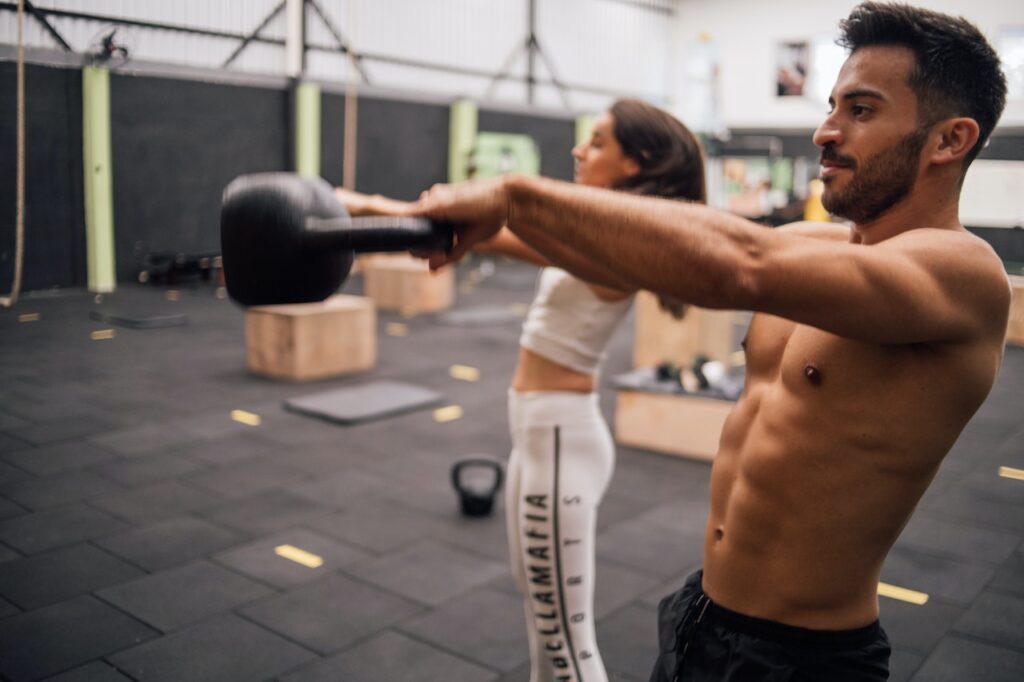
6. Dumbbell Side Lateral Raise
For this workout, you can start off with a beginner dumbbell weight of 4.5 Kgs. Hold a dumbbell in each hand and stand up straight.
In one deliberate move, stretch both hands outward to the side, making sure only your arms and shoulders are moving. This will work your chest and arm muscles beautifully. Aim to do 10 to 20 reps as a beginner.
7. Shoulder Press
To perform a shoulder press, you need to be sitting down with your back straight and properly supported. Grab a dumbbell in each hand, making sure it’s not too heavy if you’re a beginner.
The starting position is with your elbows raised at shoulder height with each dumbbell at either side of your head. Now slowly lift your hands upward, making sure it goes straight up instead of forward. Lower it back for one rep. Do around 8 of these with each session.
8. Incline Dumbbell Press
This workout is best done on an inclined weight bench that’s specifically designed for the job. You start by holding one dumbbell in each hand, beginning with light ones for safety. Now lift the dumbbells on either side of your head, aiming for a 45-degree angle for the bend of the elbow.
Three reps for 4 sets should be enough for beginners. Note that intensity can also increase depending on how low you bring the dumbbells back. Try not to push your body too much as you get used to the workout.
9. Barbell Bench Press
Barbell bench press is a classic workout that starts off with you lying down on the bench press and holding a barbell with both hands. For beginners, it is okay if the barbell itself weighs around 80% of your body weight. For bigger weights, it’s better to have a friend help and keep you safe during the training.
Perform the bench press by lifting the barbell upward while lying down. The key to the bench press is to keep your grip far apart and add a little curvature to the lift. The bar should be in line with your chest instead of on your neck. Three or four reps should be enough.
10. Barbell Bicep Curl
This one is fairly basic and starts off with you standing up with your back straight and a barbell held in both hands. Grip the bar with your palms facing yourself and starting from a lowered position.
Now lift the barbell upward, making sure your elbows move further forward so that the barbell gets close to your face. This makes sure that you’re also engaging the shoulders and not just the arms.
For beginners, start with a lighter weight, maybe around 80% of your total mass. Eight repetitions should be fine for a beginner.
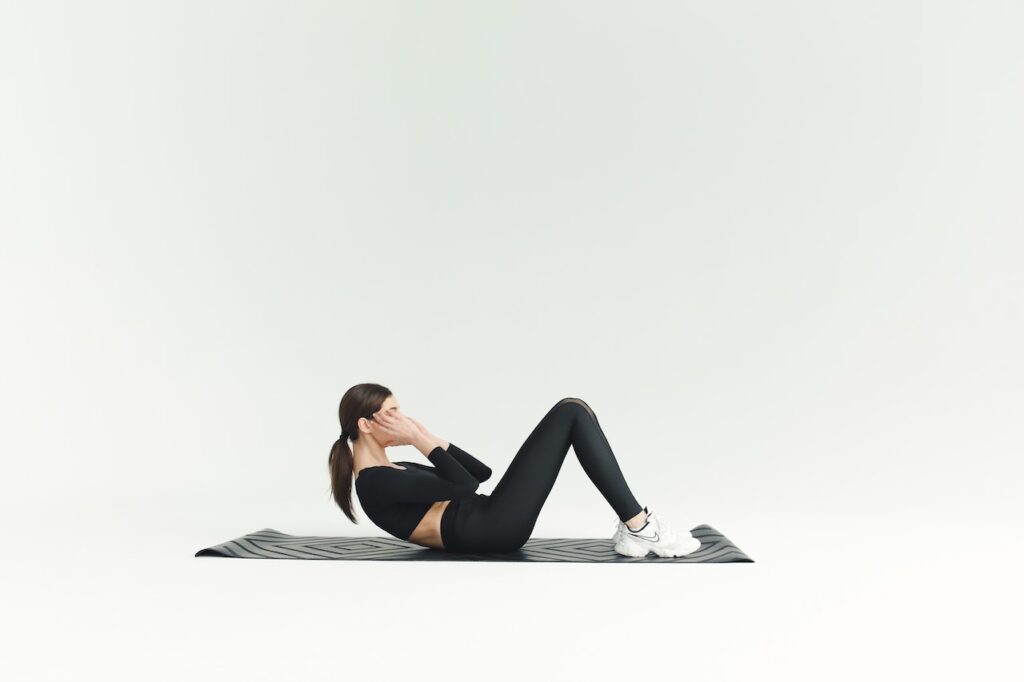
11. Triangle Push-Up
A triangle push-up doesn’t really need any sort of equipment but don’t be fooled; it’s still one of the more effective upper-body workouts out there. A triangle push-up is done in exactly the same way as your classic push-up.
Your body is down on the floor and held up on your hands and toes with the back forming a straight line. The main difference is the hands. A classic push-up means that the hands are braced on either side shoulder-width.
With the triangle, however, the hands are braced on the centre with the pointing finger and thumb creating a “triangle” with each other. This puts more intensity on the arms and shoulders. Beginners can start with 8 reps for 2 sets.
12. Cable Rope Hammer Curl
A cable rope hammer curl requires access to ropes attached to the weight machine. You can start at the lowest setting and work your way up through the setup.
To perform this workout, just grab the rope with both hands and stand with your body straight and feet firmly in place. Now pull the rope towards your chest, making sure your shoulders open up with each pull.
If you want to focus on the bicep, try twisting out the rope at the end of each pull but a neutral grip will benefit the brachialis more. Aim for eight reps for beginners.
13. Plank
Planking is a classic full-body workout that can be done in as little as 30 seconds. To perform this move, start by lying down flat with your front facing the floor.
Using your forearms and the tips of your toes, lift yourself up, creating a straight line from the back of your head down to your feet. Engage the core and shoulder muscles for 30 seconds.
14. Farmer’s Walk
The farmer’s walk is essentially walking while gripping a dumbbell in each hand. Gently lift and then keep your body straight and chest out while taking a few steps as part of the workout. Start with light weights and work your way upwards.
Note that the goal here is strength to its best to choose something a little heavier, maybe start with 25 pounds per arm. Aim for ten steps with each set. Beginners should do around 2 sets as part of their workout.
You can also do farmer’s walk with a kettlebell. Find out how to do kettlebell farmer’s walk here.
15. Dips
These are done with the help of a dip stand or a dip station. To perform dips, you want to grip each handle with your palms facing downward. Using strength from your arms, gently lift your body upward and then bend at the knees so your feet aren’t touching the floor.
You perform a “dip” by lowering your body down until your elbow bends at a 45-degree angle. Keep your upper body straight with each dip. Perform around 10 reps using only your body weight.
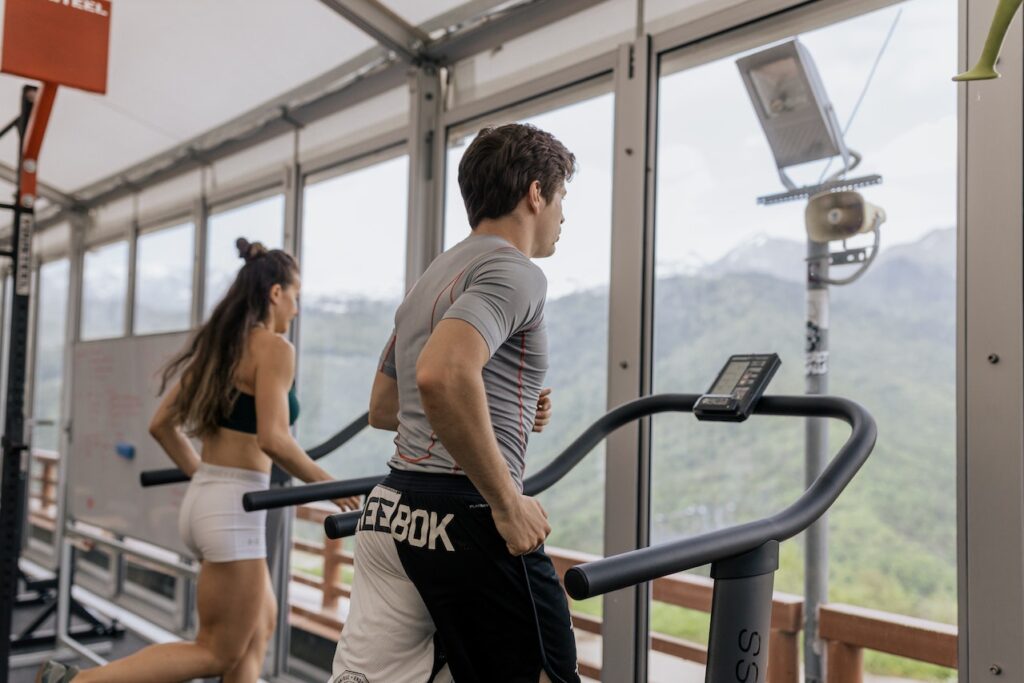
Best Fitness Machines for Upper-Body Exercise
Aside from the dumbbells and barbell workout equipment, you’ll find that upper-body exercises can also be done using certain fitness machines. You may be surprised at how cardio equipment can be repurposed to target the upper body while still giving you a good calorie burn.
Here are some of the fitness machines that can be incorporated during your upper-body set.
Elliptical Cross Trainer
A 10-minute workout on the elliptical cross trainer helps burn calories. It’s a wonderful tool that can get your heart pumping quickly; plus it doesn’t take up much space.
The trick to using this for upper-body exercise is to keep your hands and arms engaged on the handles. Increasing the resistance or the intensity with each move should help tone those muscles without bulking them up too much.
Rowing Machine
A gym rowing machine benefits the whole body in one fluid cardio move. However, it can do so much for the arms and shoulders, especially with increased intensity.
With a rowing machine, you can choose to simply focus on the arms with the added weight or engage the whole upper body with each move. Note that form is crucial with rowing so make sure you’re executing each stroke correctly.
Treadmill
As weird as it sounds, the treadmill actually works beautifully for upper-body exercises. The trick is to use the treadmill without holding on to the support bar.
Instead, hold onto some dumbbells instead and try lifting and moving your arms while walking on the machine. This helps with balance and gives you a full body blast at the same time.
Find more posts about treadmills here.
Benefits of Upper-Body Exercise
Other than the fact that upper-body exercises help build an amazing shape, the truth is that we use our upper body for so many activities. The arms get a lot of workout throughout the day and it helps to maintain peak strength just in case we have to do lifts or carry things in daily life.
Other benefits associated with upper-body exercises include the following.
Prevents Osteoporosis and Sarcopenia
Studies have shown that weight training and resistance exercise have the ability to prevent and treat osteoporosis in the older generation.
In fact, workouts that target the bone and muscles have a way of improving bone mineral density which carries over to adulthood. Along with proper maintenance, this can help prevent fractures and skeletal problems in the elderly.
Improves Body Posture
Upper-body workouts rely heavily on proper form in order to obtain correct execution. With repetition, upper-body workouts essentially coax the musculoskeletal system into falling into the body’s correct form.
Over time, this makes it easier for individuals to naturally fall into an ergonomic stance with straight shoulders, chest out, and back straight.
Helps Burn More Calories
Muscles burn more calories even while at rest. With the best upper-body workouts, you can develop these muscles and increase the resting rate of your body in consuming calories. Note though that building muscle doesn’t necessarily mean losing weight.
Since muscles are heavier than fat, you might find your weight still going up. However, the muscles help create toning and definition which can give you that amazing silhouette.
More Strength for Lower Body Lifts
Don’t forget that the body works in tandem with all other body parts. Improving your upper-body strength can definitely help when leg day comes. You can increase your deadlifts and essentially make the leg muscles stronger with the added intensity.
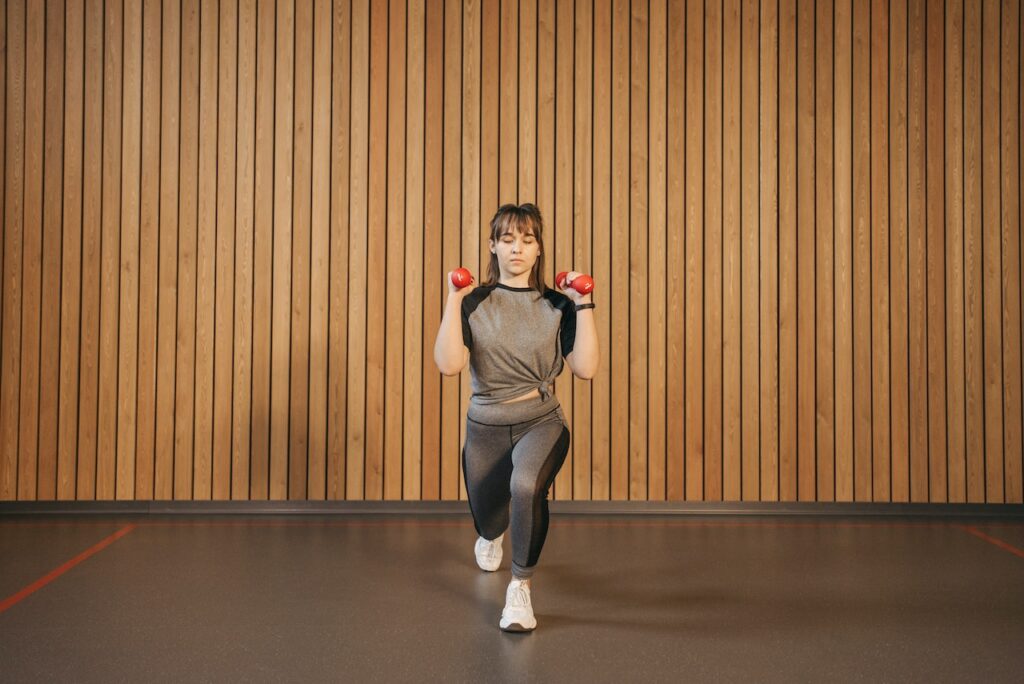
Final Thoughts
The best upper-body workouts typically include the use of dumbbells, barbells, or even large equipment. The free weights help add intensity and diversity to your workouts for different muscle groups.
Note that you don’t have to aim for lots of reps or ultra-heavy weights. As beginners, it’s enough to get started and just climb your way up the ladder.
Related Questions
1. Should I do a warm-up?
You should always perform warm-ups before starting an exercise regimen. With weight training, you want to start off with a little light cardio like a jog on the treadmill, an elliptical, or even simple jumping jacks.
2. What are the ideal dumbbell weights for upper-body exercise?
Beginners can start with a 1.5-kg dumbbell for workouts if starting absolutely from zero. However, it’s perfectly fine to increase the weight of the dumbbell if it feels too light or too easy for you.
- How Long Should You Stay in a Sauna Safely? - 20 January 2024
- Boost Post-Workout Recovery: Benefits of Using a Sauna for Recovery - 19 January 2024
- Discover the Health Benefits of a Low EMF Infrared Sauna - 19 January 2024
